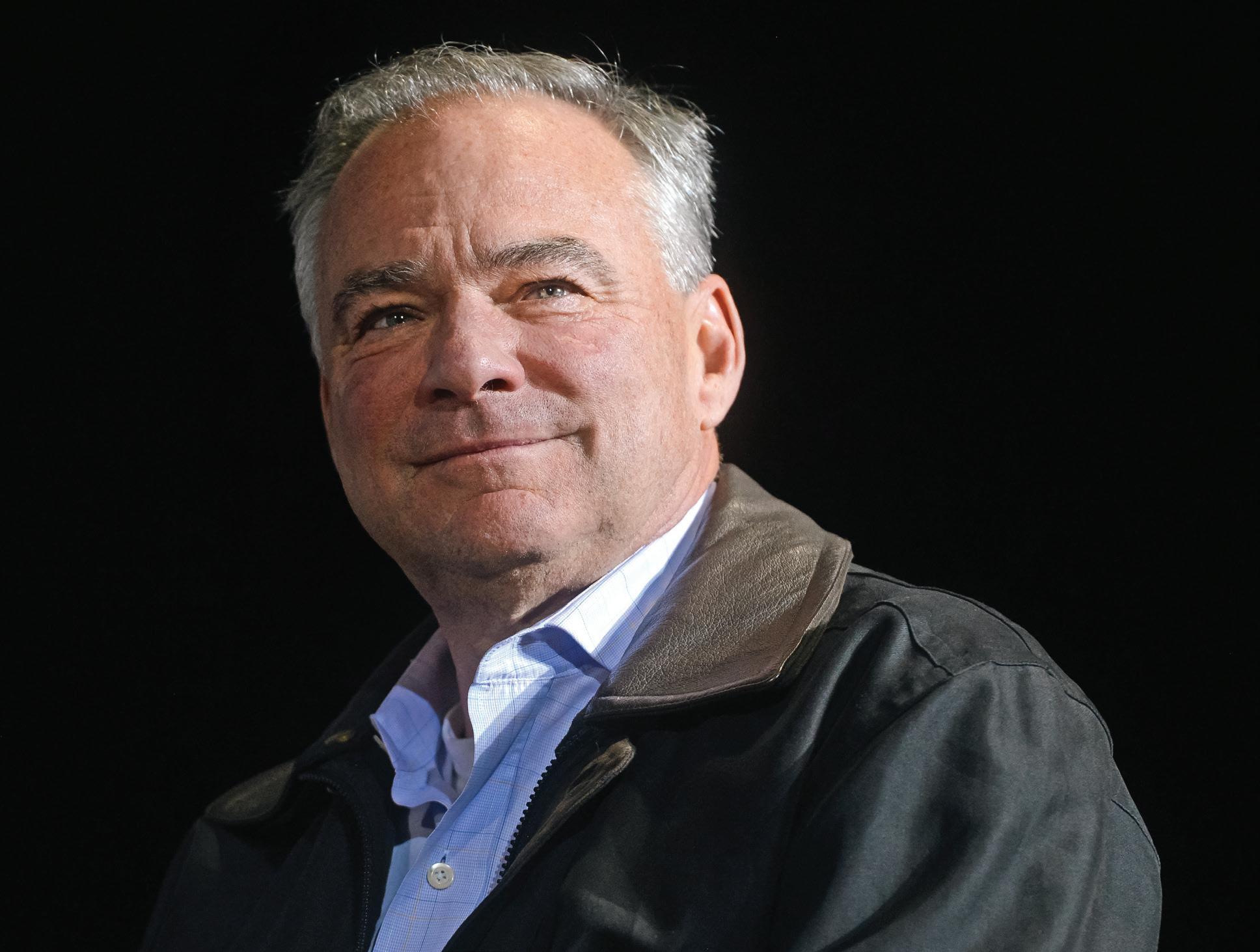
2 minute read
Change Agents
Tim Kaine | United States Senator from Virginia since 2013
Style Weekly and The Richmond Free Press have both been the chroniclers of the major shift in who and what Richmond is.
Richmond was a city in decline 40 years ago with a population in free fall like other, older cities. Today it is growing and thriving with a youthful energy, dynamic arts and the first thing I’d say was, “I know, I know, we aren’t proud of it either. Not the name we want to be known by but we’re stuck with it.” By the time I left, the governor’s folks would be calling back no problem. culture scene and a long overdue embrace of the outdoor assets, especially the James River, that make us special. Richmond needed to open leadership opportunities to a much broader group of people than those allowed in decision-making rooms in the past. It has done so with success, though much work still remains.
The whole team was responsible for that but it was driven by the very competitive John Maloney, initially. His importance cannot be understated. He took a magazine that was more known for being silly, not always, but it had the tendency to lean toward the silly or offbeat, and he pushed it really hard to aggressive news coverage. He wanted it to be the place where people had to turn to get the real story. He really pushed that and we went for it. In a lot of ways, it worked.
Eventually, there was something like five or six additional publications in addition to the main weekly book. They would come out monthly or quarterly. I remember counting them all up and, I can’t remember exactly, but there was 52 from Style and then something like 25 from the other publications. And that’s all coming out of the same room. So we were just constantly cranking out material.
There was an entire business staff that was 10 or 12 people. And there was a staff just selling classified ads and that was another half dozen plus people. It was a thriving enterprise. The magazine, while I was there, $4 million plus sales years were normal and up to $1 million was profit. I was told at the time that, pound for pound, we were the most profitable arm of the whole Virginian-Pilot, Landmark Communications empire, and that included The Weather Channel. We were proud of that, obviously. But Style didn’t keep any of that money. Any profit went to Virginian-Pilot. So when things got rough, there was no money in the kitty to bail them out. A few other publications like Style managed to weather financial storms and come out the other side. But because Style didn’t have independence, or an independent source of funds, they couldn’t.
From the news standpoint, it was very aggressive. The culture was “be unrelenting. Be as nice as you have to be but most importantly, don’t










